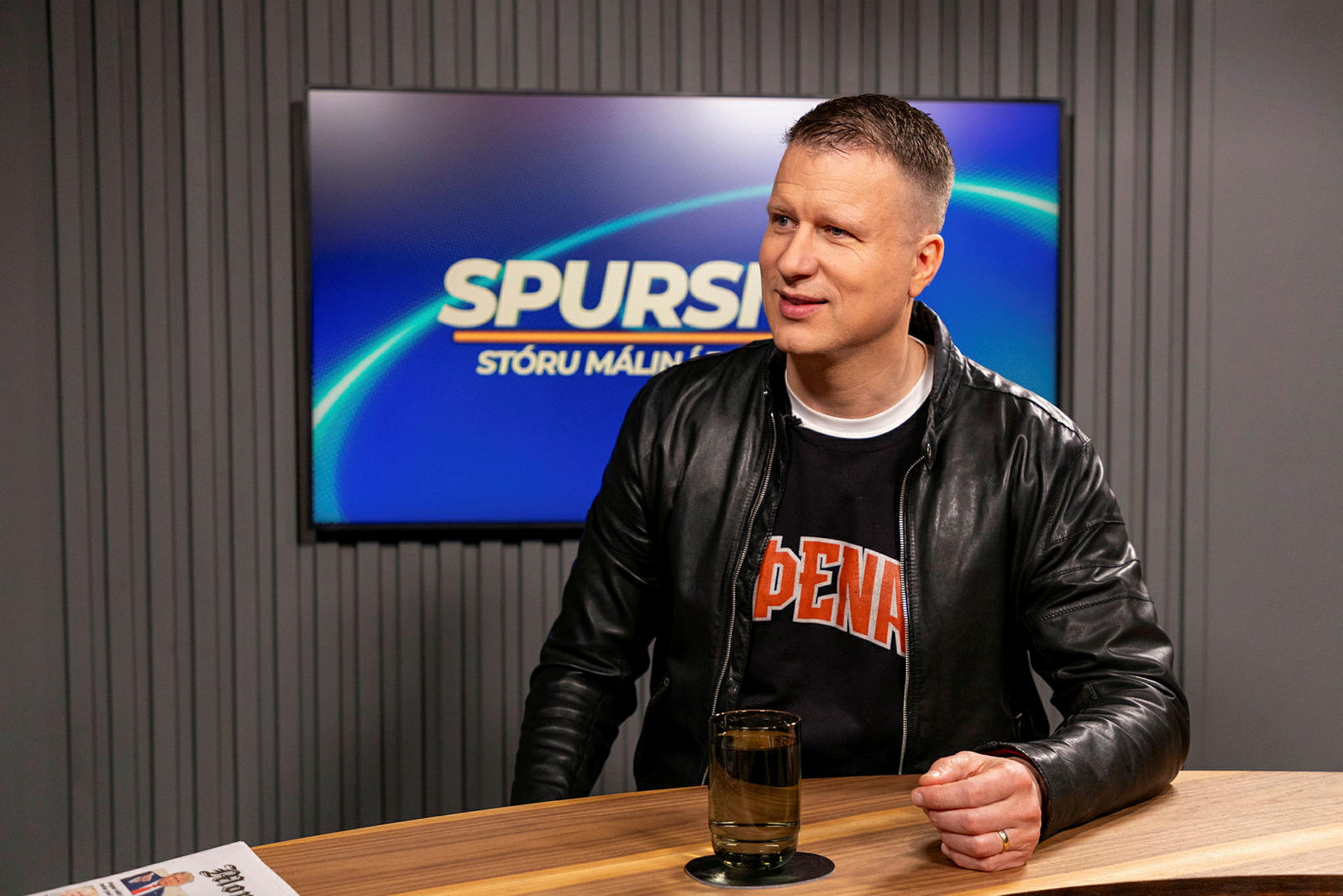Russians ‘increasingly brutal’ in attempts to disrupt the Netherlands, says MIVD
:format(webp)/s3/static.nrc.nl/wp-content/uploads/2025/04/22111317/web-2204BINmivd.jpg)
An alarming detail from the annual report of the Military Intelligence and Security Service (MIVD): Russia does not send its latest tanks to Ukraine, but in the direction of the border with NATO. The Russian war industry, as the military intelligence service notes, now produces more military equipment than Moscow needs on the Ukrainian front.
And while Russian soldiers in Ukraine often have to make do with very old T-62s and T-55s, Moscow is busy with a military structure towards Europe, says MIVD director Peter Reesink. « The Russian armed forces have adjusted their military organization in a westerly direction, new headquarters set up. The new equipment is intended for that. Of course, they have removed a lot of capacity since the outbreak of the war, but the fact that they do not send their new things to Ukraine is rather ominous. »
For more than a year, the Dutch defense summit has been warning about the risks of a military attack on Europe, but never those warnings were so concrete. Defense Minister Ruben Brekelmans spoke of a « gray zone » between war and peace last fall. In the meantime, says Reesink, it might be better to speak of ‘dark gray’.
Read also
MIVD sees increasing threat from Russia: ‘Gray area between war and peace’
The Kremlin spends 40 percent of Russian GDP on Defense and Interior Security. And corrected for purchasing power (labor and production costs are lower in Russia), the Russian defense budget is now higher than that of all European NATO countries together.
At the same time, Moscow has performed its hybrid warfare in Europe – also in the Netherlands. Russian intelligence services, the MIVD notes in its annual report, becoming ‘increasingly brutal’ in the attempts to disrupt and destabilize Dutch society. In the past year, Russian hackers tried to penetrate the board system of a ‘public provision’ (the MIVD does not mean which one) with the aim of sabotaging it-the first concrete Russian Sabotage promotion in the Netherlands.
‘Hybrid’ operations
The MIVD saw attempts to penetrate systems to be able to damage them at a later time. Around the European elections, Russian Hackers tried to flatten websites of Dutch political parties and of public transport companies through DDOS attacks. All these attempts, Reesink said during the press conference around the annual report, did not lead to success. « We were there on time to warn and support parties. » In other European countries, the attacks led to success.
Moreover: the fact that the Russians have now made online sabotage for the first time is relevant, says Reesink: « You see that Russian services are willing to take greater risks in their operations. » In their ‘hybrid’ operations against Europe, Moscow always tried to stay well below the level of a real war. With the first real sabotage attempt against the Netherlands, Russia explicitly sets the boundaries. Reesink speaks of « a turning point. »
You can see that Russian services are willing to take greater risks in their operations
Will Russia prepare for war with NATO?
« We don’t see that intention, » says Reesink after the presentation of the annual report, « not yet. But the question is what she wants to do with all those military capacities. I can partly explain that by overcompensation, the Russians have had to invest a lot in the war with Ukraine.
While the Russian war economy is running at full speed, many European countries hesitate on raising their defense spending. In the Spring Memorandum, the Cabinet Schoof will allocate more than 700 million euros extra for the armed forces, while more than 15 billion is needed to achieve the NATO objectives in the coming years. And even if the money is found, it will take a few years before Europe can keep up with Russia.
Article 5
“We are in one Window of Vulnerability ”, Reesink says: « A very vulnerable period. » The MIVD chef does not think that Russia will manage a large-scale attack on NATO. « Putin will not want to. But try something at regional level, as a kind of pin prick, cannot be excluded. I think of the Crimea, ‘green males’. Also in the border areas of Estonia or Latvia, armed men in unclear uniforms would be able to take over power, Reesink also knows Russian. »
With a great military power at the NATO-Oostbens border, Putin could be tempted to test Article 5 of the Northern Atlantic Convention (which shows that an attack on one of the countries is seen as an attack on all countries) in practice. The chance that such a military adventure runs out on a large -scale war between Russia and NATO is then greater than ever; Reesink speaks of « a very dangerous scenario. »
The size of the Chinese cyber attacks is much larger than the Russian
The MIVD chef is also pessimistic about the possibilities to come to a file in Ukraine. « The conflict is very favorable for Russia. On the fighting field it prevails. If it continues like this, it can take the Donbas entirely this year. And as long as Putin is not threatened in that ambition, I see the negotiations very slow. »
The Netherlands is an attractive target for Russia, because of the support for Ukraine and the crucial role it plays in the supply of American reinforcements. The good news, according to Reesink: the Dutch intelligence services AIVD and MIVD have a good overview of the Russian attempts to attack computer systems around vital infrastructure. On the other hand, the services only have ‘limited grip’ on the Chinese attempts to break into Dutch computer systems.
The size of the Chinese cyber attacks is much larger than the Russian, the Chinese structures are also much more diffuse. Where that can lead, it turned out in the United States, where Chinese hackers were able to penetrate the communication of American internet providers – so that even the traffic of intelligence services was compromised. « I don’t want to be the alarm bell right away, » says Reesink, « and even if it is annoying to say, but: I think we can’t be reassured. »
Read also
Troops to the east? Then they first have to press through the Netherlands

:format(webp)/s3/static.nrc.nl/wp-content/uploads/2025/01/29151731/data127343910-a34e64.jpg)
/s3/static.nrc.nl/images/gn4/data133305174-ec8c91.jpg)

/s3/static.nrc.nl/images/gn4/data133306995-b21914.jpg)



